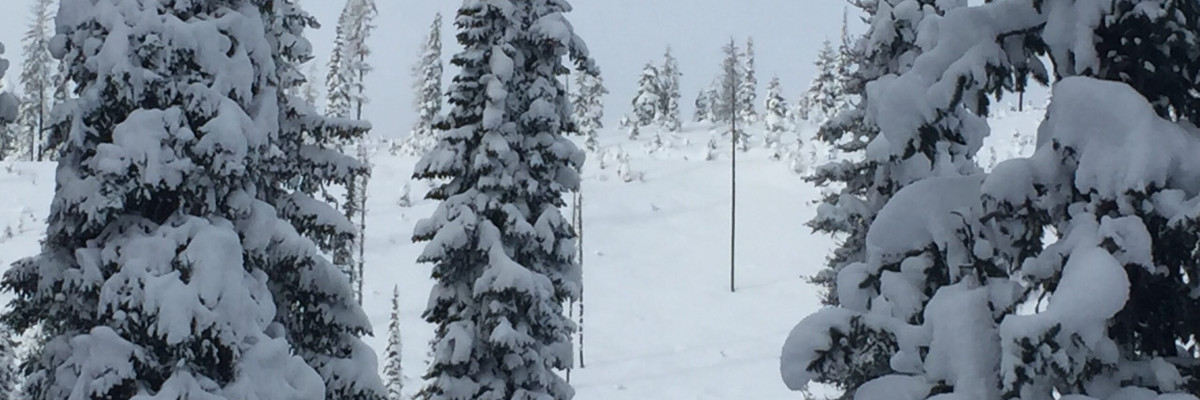The current avalanche danger is Considerable in the west central Montana backcountry on steep (>30 degrees) wind loaded slopes. On all other slopes the danger is Moderate.
Good morning, this is Travis Craft with the West Central Montana Avalanche Center’s avalanche advisory for December 15, 2016. This danger rating does not apply to operating ski areas, expires at midnight tonight and is the sole responsibility of the U.S. Forest Service.
Weather and Snowpack
Mountain temperatures range from 12 F to 23 F in the region. In the Bitterroot winds are 7 mph out of the SSE and Point Six, in the northern part of the advisory area, winds are reading at 12 mph with gusts of 21 mph out of the SW. The forecast area received 1 to 6 inches of new snow in the last 24 hours. The SWE totals are .3 to .8.
Tim and I toured near Lolo pass yesterday. The snowpack structure is still poor and the facets near the ground are still failing. We were able to get propagation in our ECT’s. With the new snow and winds overnight, steep leeward slopes have considerable danger. This means careful snowpack evaluation, cautious route-finding and conservative decision-making are essential to recreate today.
The first avalanche problem is a persistent slab that is releasing near the ground on basal facets. It gained strength, but with the new load from snow and wind loading it will become more reactive. You need to dig in the snow and assess this layer.
The second avalanche problem are wind slabs created on leeward slopes. There was new snow to be transported with the wind last night. These slabs will be identified by the scouring of slopes and hollow drum-like sounds.
Remember, the avalanche advisory is a starting point for decision making. The actual avalanche hazard could be greater or lower where you are traveling. Pay close attention to any signs of instability: Shooting cracks, recent avalanche activity, collapse noises and whumphing. Snow showers will linger in the area through tonight as arctic area pushes the warm front out of the region with high winds.
Avalanche and Weather Outlook
Snow showers will linger in the area through tonight as arctic air pushes the warm front out of the region with high winds. With new snow and wind the avalanche danger will remain the same. If you are out recreating in the backcountry, please send us your observations, these are very helpful in producing the advisory.
I will issue the next advisory on Saturday, December 17, 2016.
Ski and ride safe.














